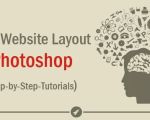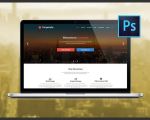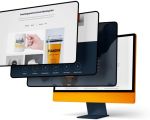Tips for Designing Websites That Are Visually Cohesive
- 1 - The Importance of Visual Cohesion in Website Design
- 2 - Choosing a Color Scheme That Ties Everything Together
- 3 - Ensuring Typography Consistency Across the Site
- 4 - The Role of Images and Graphics in Visual Cohesion
- 5 - Spacing and Layout: Key to Maintaining Cohesion
- 6 - Real-World Case Study: Cohesive Website Design
- 7 - Why Choose SitePoint 24 for Your Website Design Needs
1. The Importance of Visual Cohesion in Website Design
When designing a website, one of the most critical aspects to consider is visual cohesion. A cohesive design means that all the elements on the website—such as colors, fonts, images, and layout—work harmoniously together to create a unified experience for users. Without cohesion, a website can feel disjointed and confusing, which can negatively impact user engagement and overall site performance.
Visual cohesion enhances user experience by guiding visitors through the content smoothly and ensuring they stay focused on the key messages of your site. Whether you're building an e-commerce platform or a personal blog, maintaining visual harmony will ensure that visitors have a positive, seamless experience that encourages them to explore more.
2. Choosing a Color Scheme That Ties Everything Together
The color scheme of your website plays a major role in creating a visually cohesive design. Colors have the power to convey emotions, set the mood, and establish a brand identity. To achieve a cohesive look, it's important to select a color palette that complements the content and functionality of your site.
Start by choosing a primary color that aligns with your brand or desired website tone. Then, select complementary secondary and accent colors that can be used for calls to action, buttons, or links. Ensure that your color choices are consistent throughout the site to maintain visual balance and harmony. For instance, avoid using too many clashing colors or overly bright shades that could overwhelm visitors.
A simple color scheme with three to four colors is often ideal for website design, ensuring the site feels unified without being too busy. Tools like Adobe Color and Coolors can help you choose harmonious color schemes that work well together.
3. Ensuring Typography Consistency Across the Site
Typography is another critical element of visual cohesion. The fonts you use should be consistent and complement the overall aesthetic of your website. Using too many different fonts or styles can create a cluttered look, while sticking to a few well-chosen fonts can make the site feel more polished and professional.
Start by choosing one primary font for headings and another for body text. Ensure that the fonts are readable and appropriate for your website's tone. For example, a clean sans-serif font works well for modern websites, while a serif font may be more fitting for a classic or formal brand.
Consistency is key—maintain uniform font sizes, spacing, and styles across all pages of your website. This ensures that visitors know exactly where to focus their attention, whether on headings, subheadings, or important calls to action.
4. The Role of Images and Graphics in Visual Cohesion
Images and graphics are essential for enhancing your website's design and can significantly impact the overall cohesion. To achieve a visually cohesive site, it’s important to use high-quality images that align with your brand and message. Avoid using too many unrelated or stock images that can dilute the website’s identity.
When selecting images, ensure they follow a consistent style. For instance, you can use images that share a similar color tone, filter, or mood. If you're using illustrations or icons, make sure they match in style and design to avoid visual inconsistency. Additionally, pay attention to image sizes to ensure they load quickly and display well on different screen sizes.
5. Spacing and Layout: Key to Maintaining Cohesion
Proper spacing and layout design are essential to a cohesive website. A cluttered layout with too much information crammed into one area can create visual chaos, while proper spacing helps to create breathing room for the content and guides the user’s eye through the site.
Use grids and a consistent layout structure to help align elements on each page. For example, ensure that your margins, padding, and line heights are consistent across all pages. This helps to create a sense of order and allows the content to flow naturally from one section to the next. White space—also known as negative space—is just as important as the elements themselves. It helps give structure to your design and makes it easier for users to digest information.
6. Real-World Case Study: Cohesive Website Design
Let’s look at an example of a company that successfully achieved visual cohesion in their website design. A clothing boutique launched an online store with a sleek, minimalist design. They used a consistent monochrome color palette, simple sans-serif fonts, and high-quality images that complemented the clean aesthetic. The layout was structured with clear sections, each with ample white space and well-aligned elements.
This cohesive design helped their customers navigate the site easily, and the clean, professional look reinforced the brand’s identity as a high-end fashion store. By maintaining visual consistency, they improved user experience and saw increased engagement and sales.
7. Why Choose SitePoint 24 for Your Website Design Needs
If you're looking to design a visually cohesive website that resonates with your audience, SitePoint 24 is here to help. Our team of professional designers will work with you to create a unique, harmonious design that aligns with your brand and goals. Whether you're designing a new website or revamping an existing one, we’ll ensure that every element—from colors to typography—fits together seamlessly.
With SitePoint 24’s expertise, you can create a website that not only looks visually cohesive but also performs well, providing a great user experience for your visitors. Contact us today to get started on your website design project!








